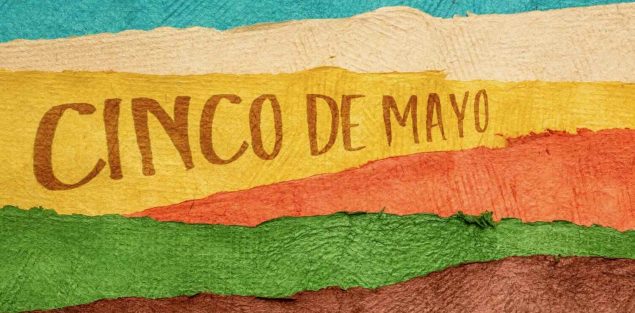The Luxurious History of Celery: Celery Soda, Celery Victor, Caviar Bumps and more.
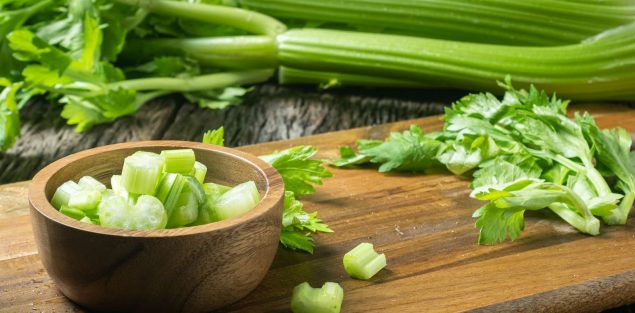
Eat and Drink Like a San Franciscan of the Victorian Era: The Symbol of Status and Wealth, Celery!
Even if you’ve never been to New York, you likely have heard of Dr. Browns Cel-ray Soda. The drink was such a staple, of the 20th Century, New York Delicatessen, that Jerry Seinfeld mentioned it in the episode“The Pothole”. In classic Seinfeld style, the drink was used as one of his many reasons for why he could not show a woman affection. In the episode, Jerry tells his girlfriend, “I bruised my lip; I was drinking a Cel-Ray and I brought it up too fast”, as an excuse not to kiss her.
Recently the CrawlSF team headed to Berkeley and visited Saul’s Delicatessen. While perusing the menu we noticed a house-made celery soda and it peaked our curiosity. The only celery soda you ever see anywhere is Dr. Brown’s famous Cel-ray soda, a brand created during the Victorian Era in New York. Dr. Brown’s became a staple at Jewish Delicatessens throughout Manhattan. Soon, Jewish Delis in New York and Dr. Browns Soda Company struck a deal to exclusively sell the brand to New York City based Delicatessens.
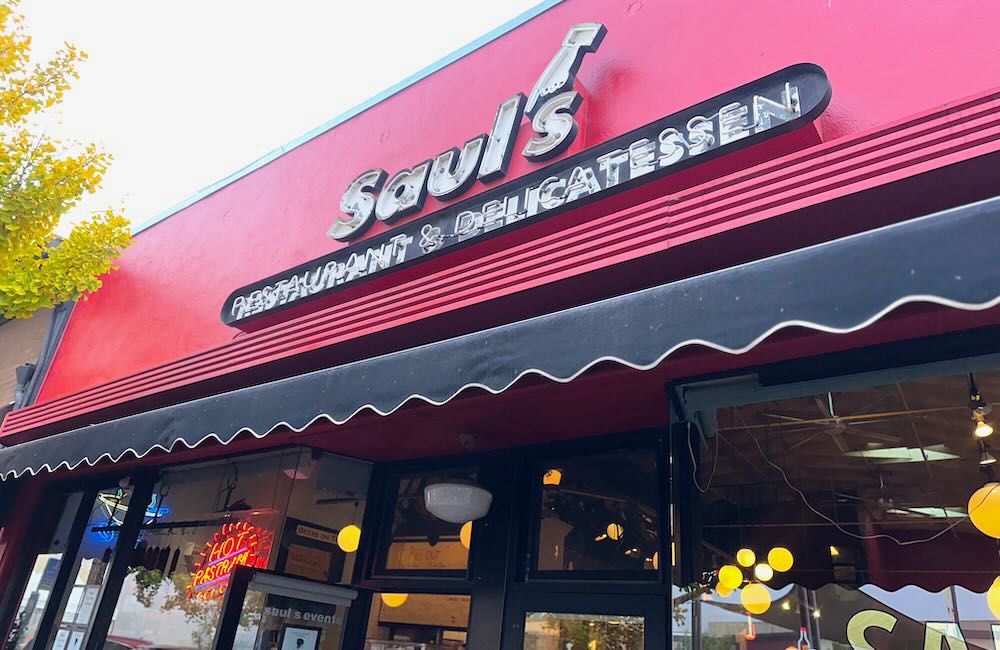
When Saul’s opened in Berkeley, decades ago, they modeled the restaurant after one of the trendy New York Jewish Delicatessens, complete with a casual diner like ambiance and traditional comfort foods like bagels, lox, knish, latkes, Pastrami, brisket and the like. They took everything up a notch, as California businesses tend to do, and offered old traditional favorites prepared with the best local ingredients.Today Saul’s offers Dr. Browns Sodas on their beverage menu, including the best recognized flavor of Cel-ray but they also offer a house made version of this savory yet sweet beverage. I have to admit, celery soda pairs well with all the deli favorites like decadent Latkes and Pastrami. While I have always had an affinity for Dr. Browns Cel-ray soda, I have to say the house made version was not bad. I definitely recommend giving Saul’s and their Celery Soda a try. It is definitely worth the jaunt to Berkeley. A meal at Saul’s will transport you to another era and another place. Be sure to get some pastrami and Cel-ray soda to schlep home.
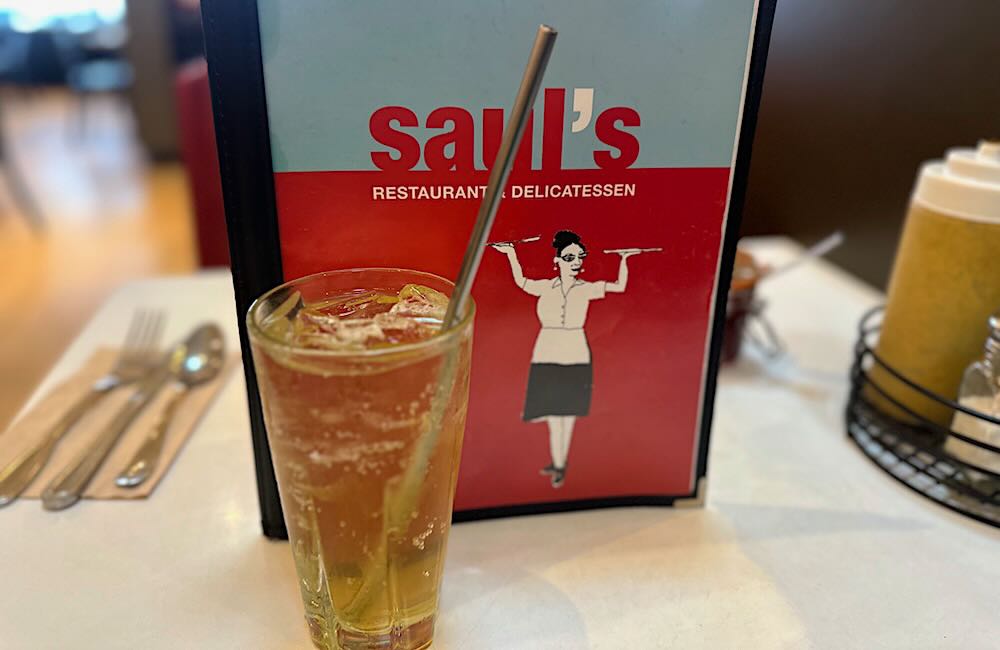
With the decline in popularity of the Jewish Deli in the 1980’s and an eventual sale of Dr. Brown’s, soon the product was distributed nation wide. While Cel-ray was not the most popular flavor in the late 20th and early 21st Centuries, there is still a market for it. It seems like a strange offering in this modern world where energy drinks, pumpkin spice lattes and trendy cocktails dominate the beverage market but there was a time that celery elixirs and tonics were among the trendiest beverages of the times. Saul’s had to create its own celery tonic to be added to soda water in Berkeley, since Dr. Browne’s was not available to Delicatessens outside of Manhattan. Apparently in the late 1800’s and early 1900’s many soda companies, a majority of which employed Eastern European immigrants made a variety of savory sodas, especially those that included celery and celery seed. Even the Coca-cola company had a celery soda as part of its production at one time. This flavor has been discontinued however since well before anyone living today was born.
A company called “Celery Cola” opened in Birmingham in 1899. The logo was very similar to that of the Coca-Cola Company. Click Here to see old photo archives with news boys wearing “Celery-Cola” baseball caps. The company was started by James Mayfield, an Alabama chemist. He partnered with John Pemberton, the man who invented Coca-Cola in 1888, shortly before his death. It was Pemberton who taught Mayfield the secrets of making medicinal tonics that could be mixed with soda water to produce a refreshing beverage. Mayfield’s Celery-Cola Company was shut down by a law suit with the Food and Drug Administration, who sued Mayfield’s company for high levels of caffeine and cocaine in the “Celery-Cola” formula, which were not disclosed to the consumer. Soon after his business venture was forced to close, he re-branded and relaunched the business, under the name “Koke Company of America”. He was soon sued by the Coca-cola Company for Trademark infringement and Coca-Cola eventually won the suit, when it reached the Supreme Court in 1920. Mayfield, however, did not give up. He soon launched the “Mayfield Beverage Company”, marketing the products as “dope” and reviving, once again “Celery-Cola” and adding a soda known as “Cherry-Kick” to the line up. The business was successful throughout the 1920’s and celery products remained trendy to the flappers. The company was finally brought down by the Great Depression.
How did celery become a go to ingredient in early sodas and elixirs? Why were there so many recipes for stand alone celery dishes in early 20th Century cook books? Celery, a vegetable native to the mediterranean, was very difficult to grow. When it was introduced in England in the Victorian Era it quickly became a status symbol, as it was not easy to come by. Celery became a status symbol from about 1830 through the early 20th Century. If you page through “Food Timeline” you will find celery as a regular feature in the appetizer section of menus and among the selections of the most regal affairs thrown by the upper-crust at the go to restaurants of the era in the United States.
Celery was such a status symbol that a special glass vase was created to display celery on your dinner table back then. The upper crust would often display celery in their celery vases, when hosting a dinner party. The wealthy class would often keep celery in the vases, in a bit of water, the way we would with flowers today, for display and snacking throughout the day. It showcased you could afford to buy celery or that you had the talents to grow the hard to cultivate vegetable. The clear vases were the most popular as they really showcased the celery. They became common wedding gifts and people would have the bottoms engraved with the names of the bride and the groom. As cooked celery dishes began to show up in cook books of the era, special celery plates to display the vegetable dishes became common place as well.
San Francisco’s elite followed the trends of the Victorian Era. In a time before Julia Child, celebrity chefs, or the food network, San Francisco was the first city to have a chef of celebrity status. In the late 19th and early 20th Centuries, San Francisco elites dined and entertained at the Grand Hotels of the Day. The St. Francis, located in Union Square was among the go to venues of the cities upper crust and trend setters. It was there that an Alsatian chef, by the Name of Victor Hirtzler worked and became the first “celebrity chef” in the United States. He invented Peach Melba, Crab Louis Salad and a dish known as Celery Victor. His cookbook is prominently displayed at the St. Francis to this day, as the historic hotel is still open for business in Union Square.
Hirtzler had made quite the name for himself prior to arriving in the city by the bay. He had been a private chef to royal families in Europe. He had been a “food taster” for Russian Czar Nicholas II. The St. Francis brought him aboard with great enthusiasm and they were proud to have him as their chef. The restaurant, on the 32 floor, at the St. Francis that was named “Victor’s”. His celery dish was all the rage in the early 20th century. He invented it in 1910 and the recipe was printed in the, “Hotel St. Francis Cook Book” by Victor Hirtzler in 1919. Hirtzler spent the majority of his life and career in San Francisco.He later was hired as the chef on the opening team of the Mark Hopkins Hotel atop Nob Hill.
Celery’s status waned, following the discovery of modern farming techniques, making it easy to cultivate. In my life time I have not seen dishes with celery featured often at upscale restaurants or dinner parties, other than the occasional Crudité platter. In spite of celery falling from its high status, to make way for modern trends , like avocado toast, “Celery Victor” lives on at San Francisco’s Legacy Restaurant Sam’s Grill. If you cannot make it to Sam’s here is the recipe, straight from Hirtzler’s cook book, give it a whirl at home:
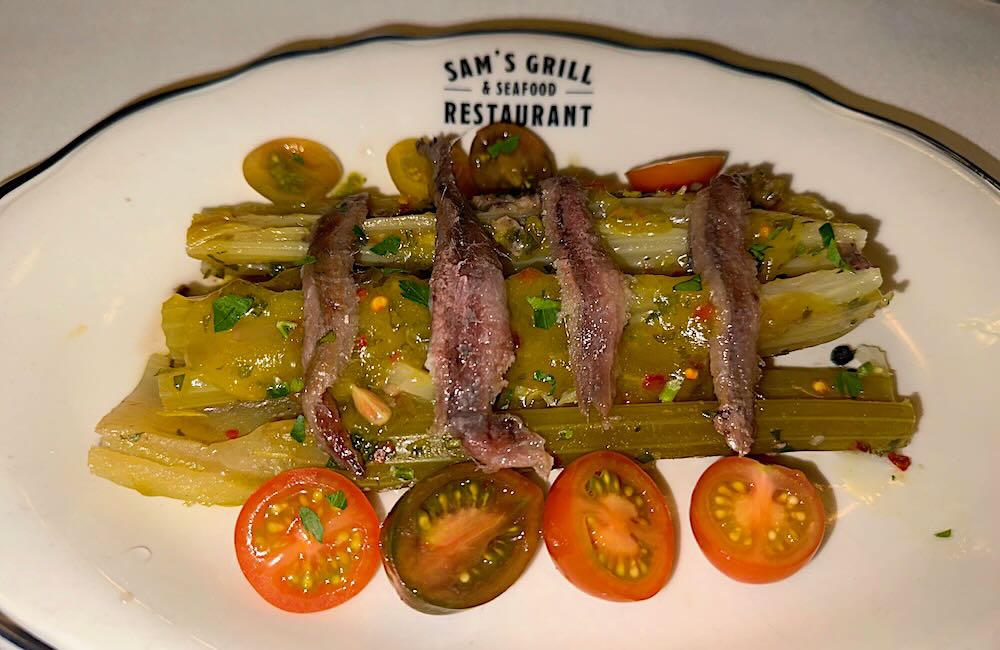
Celery Victor
By Victor Hirtzler
To make Celery Victory, first thoroughly wash 6 stalks of celery. Next, you will make a stock with five pounds of veal bones and one soup hen/chicken bones, and five pounds of veal bones plus bay leaves, parsley, onions, carrots, salt & pepper. Place celery in a large bowl and then strain the broth over the celery. Then boil until soft.
After boiling, allow it to cool in the broth. When the celery cools, gently push the broth from the celery and present it on a plate. Next, season the dish! Use chervil, pepper, salt and a mix of olive oil and white wine tarragon vinegar. (1 part vinegar and 3 parts olive oil)
Lately I have observed celery making a comeback in the modern world, mostly in the beverage world. Celery juice is being used in modern cocktails, at some of the trendier new spots in the city, such as the celery wasabi gimlet at the recently opened “Left Door” in Cow Hollow. Dr. Brownes Cel-ray soda is being mixed with vodka and it is so common place that it was recently mentioned on….Cel-ray is becoming more difficult to obtain as its popularity rises. The savory/sweet soda, which pairs very well with rich dishes like pastrami, brisket and latkes, has become all the rage as a cocktail mixer. Suddenly Dr. Browne’s Soda Company’s least popular flavor has gained tremendous popularity.
Although the 21st Century is a different world from the 1920’s and 1930’s. Some things, however, have not changed all that much. Trends that fade, eventually seem to come back in vogue. Celery was a huge thing with the flapper generation. Another trend among the flappers was a thing called a “Caviar Bump”, which has suddenly become an in way to enjoy caviar in the Bay Area, since the caviar craze hit the city in the last couple of years. What is a caviar bump? It is simple. you put a little caviar on your fist and you bump fists with your friends and then lick it off like salt before a tequila shot. Often the caviar is paired with a simple lager, like bud light but a celery based cocktail would pair even better.
The good thing for people who are trying to live a healthier lifestyle is foods and beverages that are in vogue today typically have lower calories and more nutritional benefits. Celery is a low calorie food, that is rich in fiber and vitamin K and also contains vitamin C, Calcium and iron. It is always said that the best way to live is “everything in moderation”. A celery based cocktail is a little naughty and a little nice , with some alcohol but well balanced with a nutritious and low calorie mixer. A “bump” of caviar bypasses all the high calorie accoutrement, such as creme fraîche, blinis, potato chips and eggs and goes right for a little protein. The bump is a little bit of luxury in just the right quantity and price point, although the full service on a special occasion is definitely worth the calories.
If you are looking for unique Things to do in San Francisco, try some celery victor at Sam’s and then head over to Berkeley for the unique taste of Celery Soda.





















